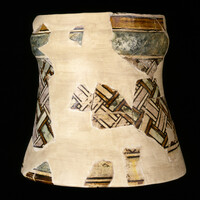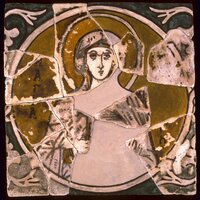Byzantine ceramic tiles
Date:
Tenth and eleventh centuries
Location or Findspot (Modern-Day Country):
Turkey
Medium:
Pottery,
Earthenware
Dimensions:
St. Panteleimon icon, 17.1 × 17.3 × 0.9 cm
Description:
Thousands of ceramic tile fragments reveal that this was an important medium of middle Byzantine decoration in the tenth and eleventh centuries. These glazed tiles were produced around the year 1000 in the province of Bithynia, in northwestern Asia Minor; textual references point specifically to its capital, Nicomedia (modern Izmit). A minority of the tiles are figural icons; Panteleimon, a healing saint born in Nicomedia and martryed ca. 305, was represented most often. Many more tiles have vegetal, geometric, or abstract patterns. The flat tiles were wall revetments or adorned templon screens; curved ones covered plaster colonnettes, capitals, and cornices. These Byzantine tiles were imitated in Spain and used to outline the antemihrab dome in the Great Mosque at Córdoba.
Relevant Textbook Chapter(s):
6
Repository and Online Resources:
• See more of the tiles at the Walters Art Museum here (scroll down).
Image Credits:
Walters Art Museum, Baltimore (WAM)






